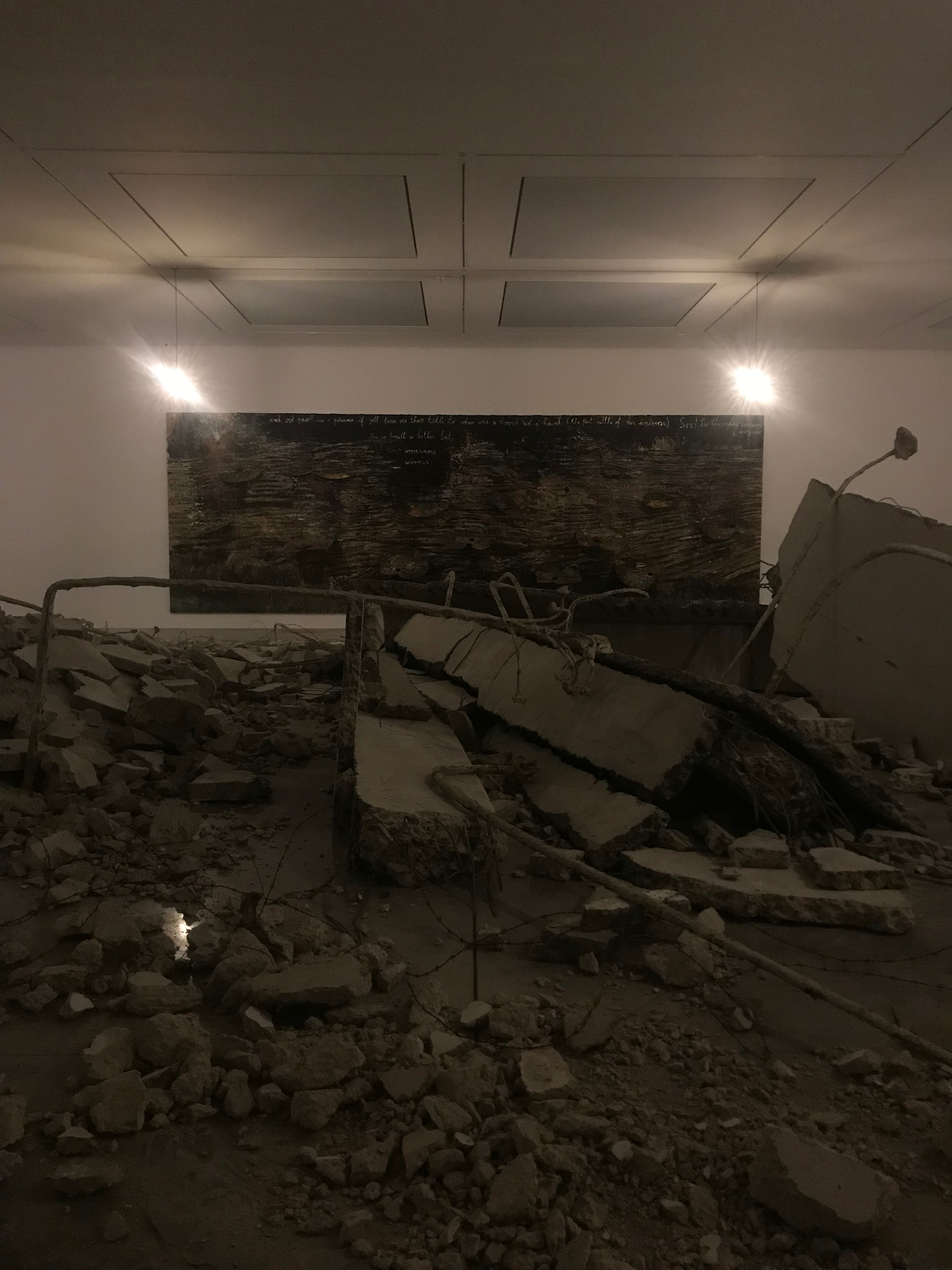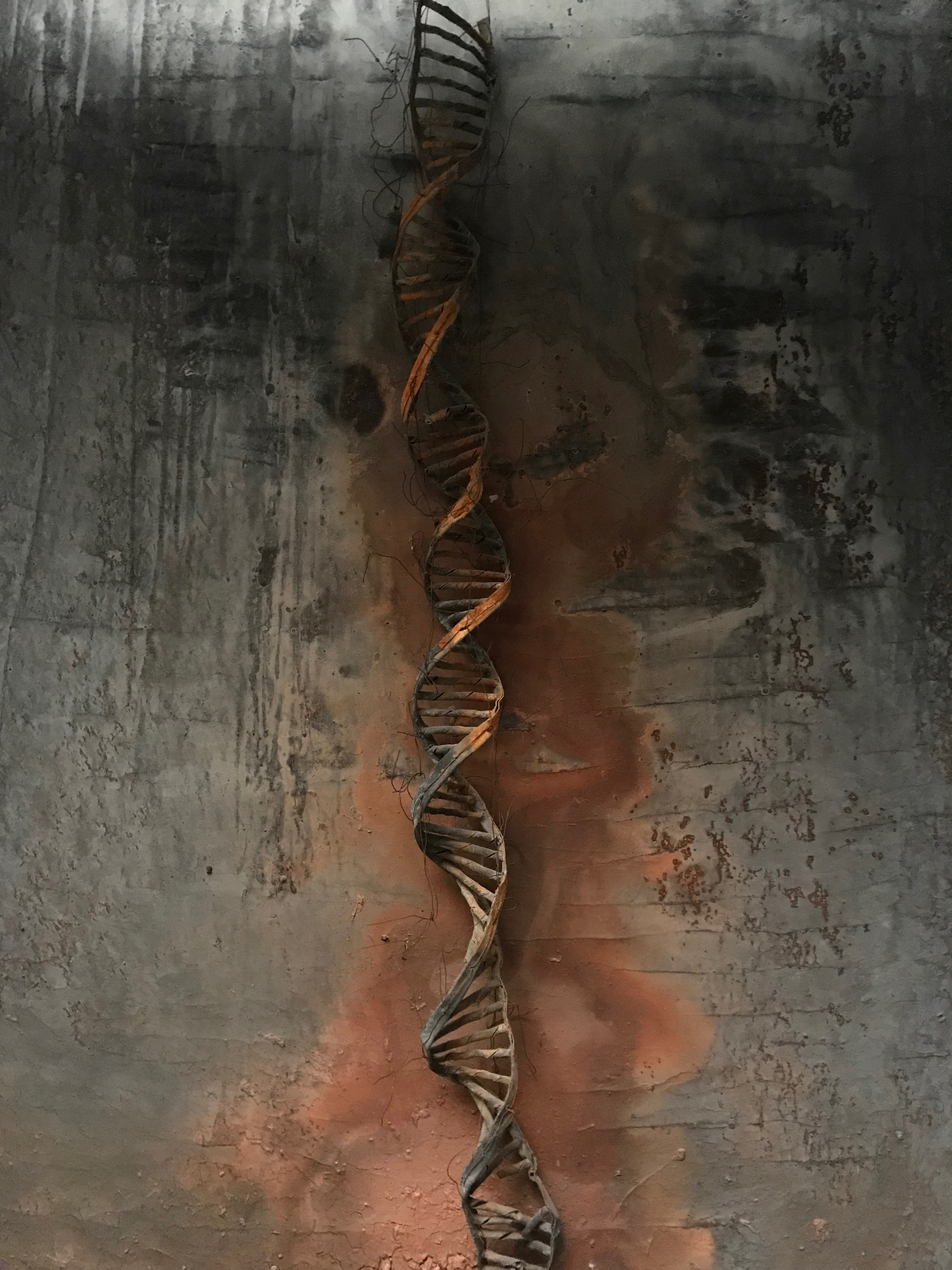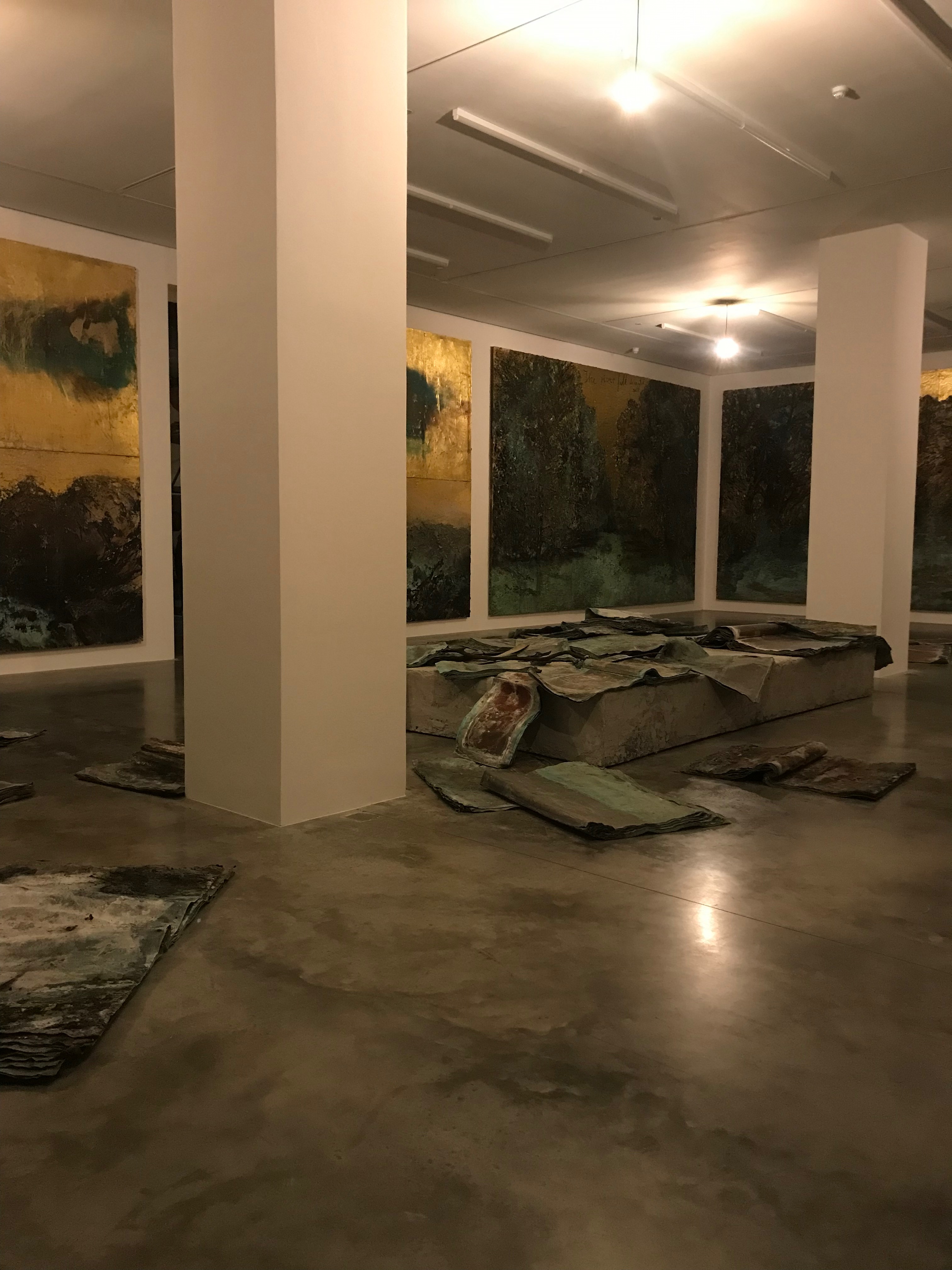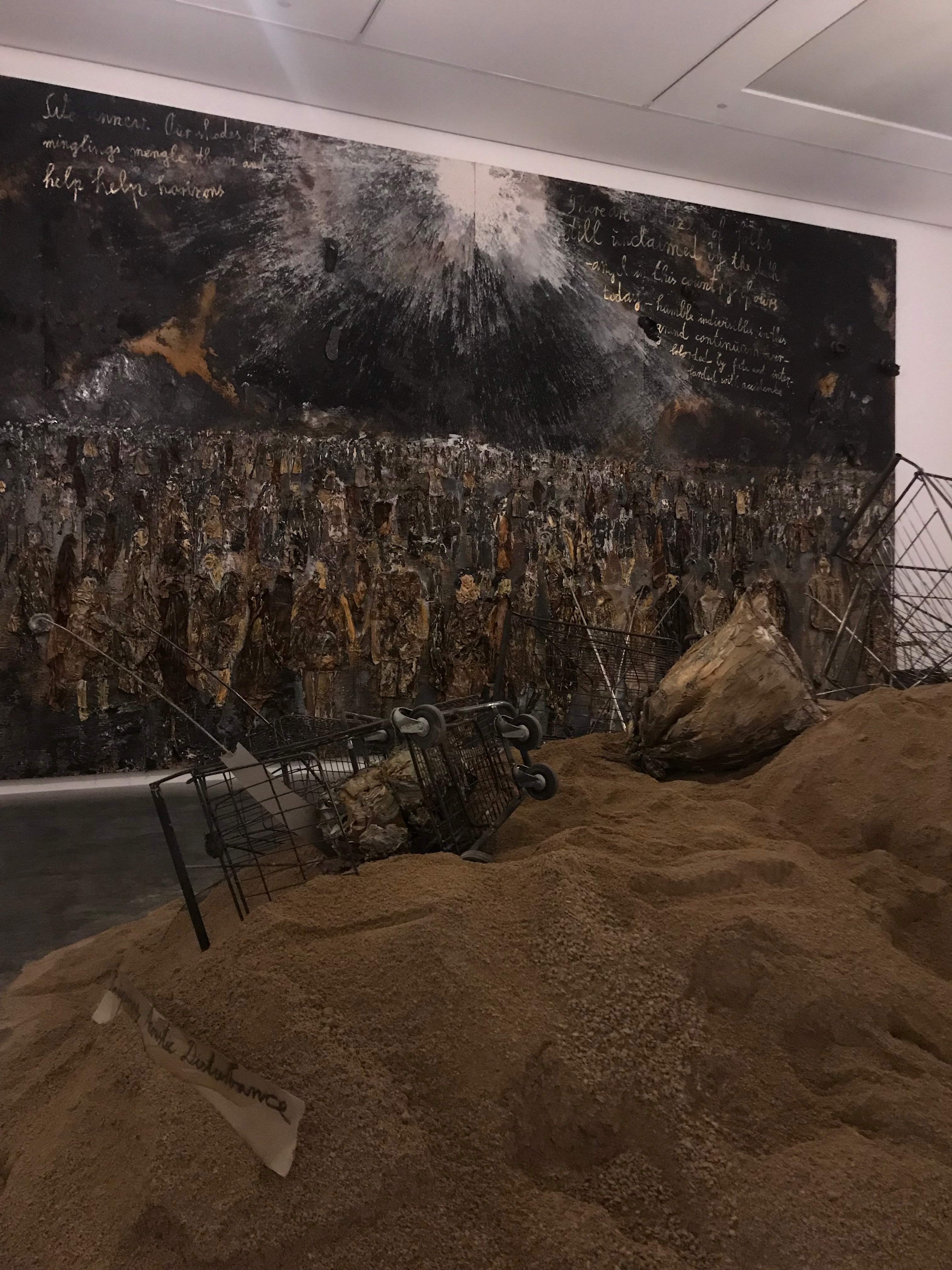Anselm Kiefer
White Cube - Bermondsey
7th June - 20th August
By Estelle Simpson
Considering I have been to many exhibitions this past year at the White Cube in Bermondsey, Keifer’s current show is indistinguishable from the prior as the artist really transformed the space, making it completely unrecognisable. The now 70 year old remoulds this site with his prophetic heavy output, fusing together Joyce’s prose and fabled earth shattering paintings installed in what becomes his apocalyptic realm. A the final part of a trilogy of the artist’s shows at the Bermondsey space, this exhibition threads together the Norse mythology and string theory of his 2016 and 2019 practice. It culminates with a manifestation of these subjects and metaphors consistently drawn upon, and now intermingled with Joycean references.
This show is inspired by Finnigans Wake, a James Joyce novel I admit I will have to add to my future reading list. Notoriously it begins in the middle of a sentence and ends with the first half of a sentence which loops it back to the opening, and thus this justifies my jump to the exploration of my favourite and final room. The fateful Monet-esque lilypads and looming Gogh sunflower reiterations line the walls, juxtaposed with a field of concrete rubble and wire which assumes the central area. While the artist explores post war German history, these destructed fields are effiges of Keifer’s personal history, connecting to the bombing of his own family home as a baby; this demonstartes the proximity of these brutalities to the artist. The rubble also seemed to evoke the grave imagery perhaps experienced on morning news earlier that day, highlighting the cyclical nature and fact that all that has changed is the geological position of barbarity.
Through a modern lens these scenes become calamitous. The centre of skeletal sunflowers are deep cavernous black holes, empty and desolated. The opposite piece presents dozens of artists palettes that become spirits which rip through the canvas up close, yet from a distance seem to blend into an unhinged riverscape. Striations cutting vertically through each canvas echo an impressionistic energy, yet this enthusiasm is more perverse in rhythm.
Big, dark and heavy, this show was a contrast of the glorious sunshine outside. You first enter a dimly lit corridor filled with natural, biological and bygone relics. This tunnels off to gallery rooms containing installations and momentous multi media works which take up walls, interspersed with quotations. This exhibition is strikingly curated to evince themes of destruction and rebirth, becoming a visual representation to accompany the novel. You can see from these works how objects are extracted from Keifer’s ‘Arsenal’ and combined into the texture of the canvases, refelcting the artist’s obssesive collecting and making. In the painting of shattered people, actual shoes loom in a tempetuous sky above crowds of people. These swarming entities are adorned in real garments, as clothing and paint coagulate on a thickly rendered surface.
The sulphurous green and brown residue in this exhibition is constrasted with golden tones, introducing light into intriguing landscapes. Landscapes are also a memory of history, they are packed with its ruins. Hacked, burned and blackened, they are attacked by human instruments which leave breif imprints on nature. With the chaotic spectacle of these compromised landscapes juxtaposed with a golden grandeur, Keifer seems to show us both heaven and hell in several immense paintings.
Like many of Keifer’s works, literature plays a signisficant role in bonding together this exhibition. This is testement to the artist’s informed perspective and political awareness. A room with large books of a verdigris patina swarm the floor, their heavy metal pages squirming. They are appariritions mirroring a collective human consciousness; sharing our equivalent fragility, they have been burned and committed to corrosion. Nightmarishly sprawled, their pages are tarnished with a bleak and dense history. Language is used as a medium - with inscriptions scribbled throughout, words materialise and take on sculptural form, celebrated as a strong genetic code which translates our history.
In a world oversaturated with information which often seems to dampen meaning, Keifer’s apocolyptic realms remind us of the weight of words, as recorders of our collective human activity. As a sanke eats its own tail, this show is designed with the dreadful cyclical nature of time, supporting Niezsche’s anti-linear theory; literature’s ouroboros will continue to chronicle and document. These books become haunting contributions to the present with their wisdom emmiting warnings of the impact of actions now on future chapters. Unrelentlessly unfolding, our collective decisions and choices will only continue to be recorded as a relfection of human nature.






